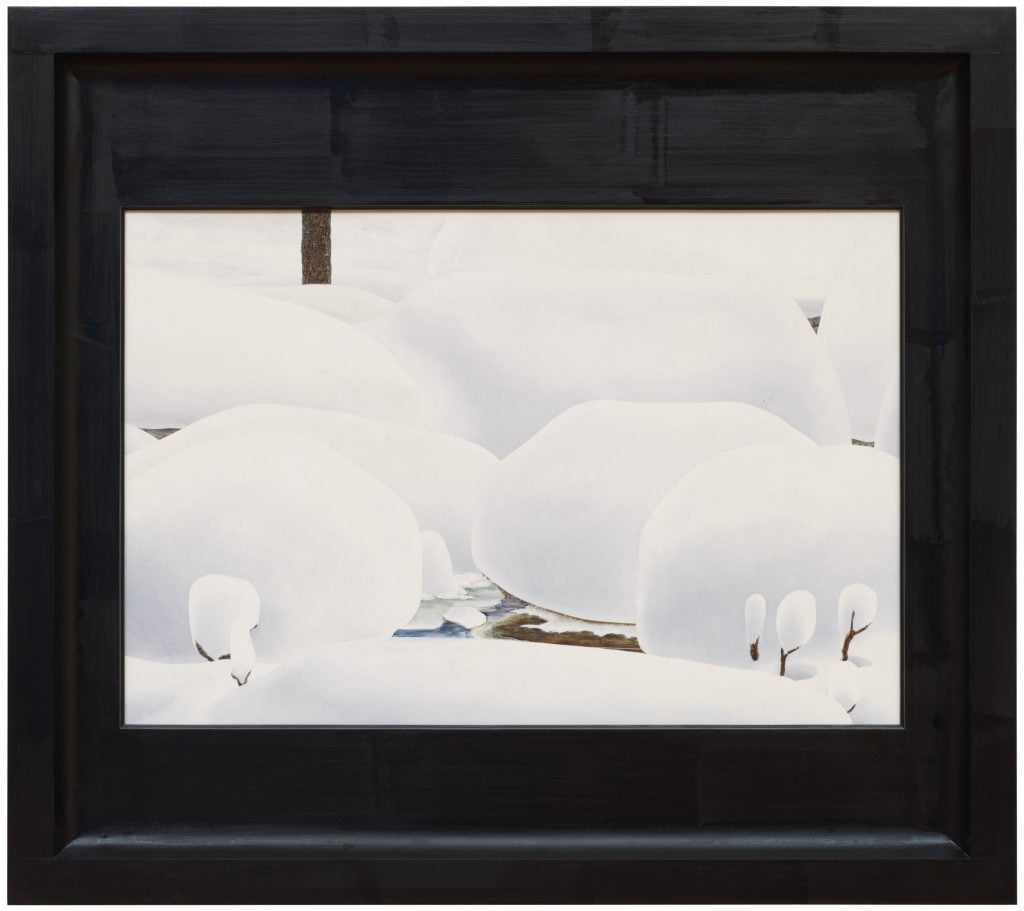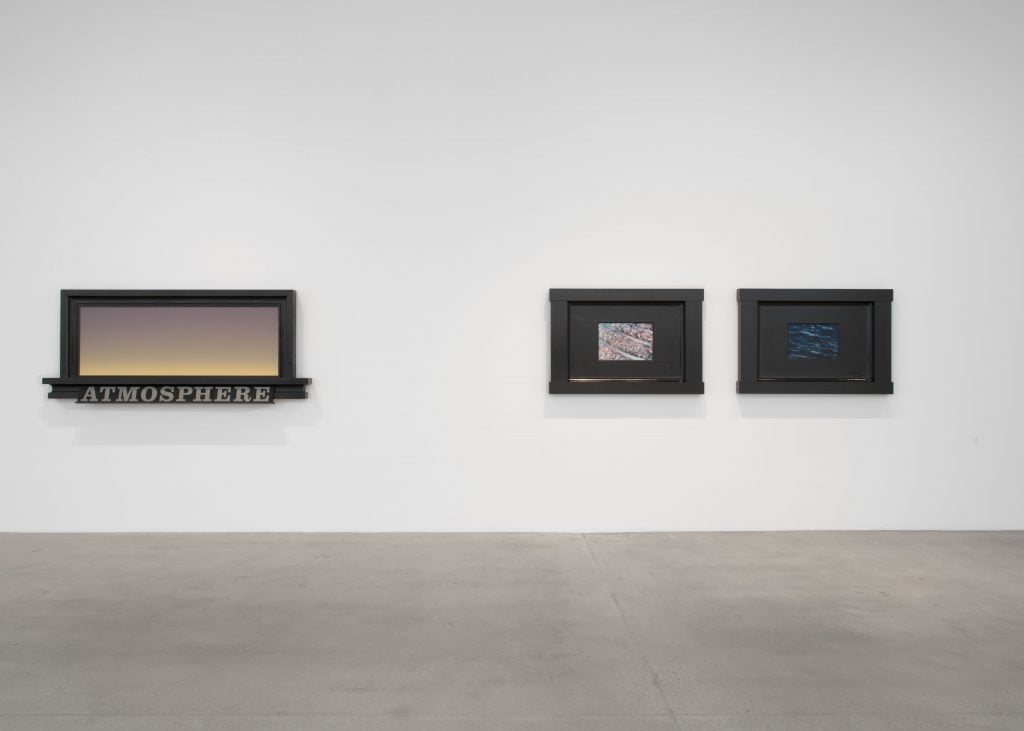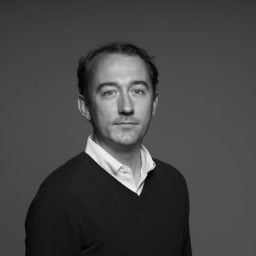Studio Visit
‘I Paint What I Witness’: For Half a Century, Artist Neil Jenney Has Blazed a Trail of His Own
Working from SoHo and Connecticut, the artist paints the world with a gimlet eye.

Neil Jenney has never taken the easy path as an artist. “Basically, I try to sell as little as possible,” he said one recent morning at his cavernous SoHo loft. “I live very modestly. I don’t travel, I don’t go anywhere. One of the problems is that I don’t really socialize.”
There are others. “I work wet-on-dry, with oil paint,” Jenney said. “I’m always waiting for the shit to dry so I can move to the next stage.” He makes gimlet-eyed pictures of the natural world, averaging only around “three, three-and-a-half a year.” In addition, he declines shows beyond the New York area. A 1981 museum survey traveled the United States and Europe, but since then, he has only had solo exhibitions in Manhattan and Connecticut, where he also has a home. “My feeling is that you don’t want to divide your energy,” he said. “I’m trying to make it in New York City.”
Really, though, he made it here long ago. Through Saturday, Jenney has a show in Chelsea with the powerhouse Gagosian Gallery, which has represented him in recent years. It’s called, “Idealism Is Unavoidable,” a realization he came to while working for the storied artist Paul Thek, soon after arriving in New York in 1966, following two years of art school in Boston. Thek “attempted perfection,” he said. “I realized that if I’m going to do realism, I’ve got to attempt perfection.”

Neil Jenney, North America Depicted, (2009–10). © Neil Jenney. Courtesy Gagosian.
The paintings at Gagosian are lucid, dreamy, and very beautiful. They catch landscapes and slivers of landscapes at odd angles and distances. Potential metaphors and allegories linger. North America Divided (1992–99), which is more than 12 feet long and just 3 feet high, features a tree stump blocked by a simple wooden gate. Its enormous black frame (one of the artist’s trademarks) reads on its lower section: “DIVIDED.” North America Depicted (2009–10) is nearly all white, with barely legible mounds of snow enrobing rocks in a flowing river. It is prime Jenney—careful fidelity to reality yielding an artwork that is utterly uncanny, almost surreal.
“Basically, what I do is what I witness,” he said. “I draw in the field, and I mix in the field, but I don’t paint in the field. It makes a difficult thing impossible.”
Jenney was wearing his standard uniform—denim V-neck bib overalls that he designed, and patented, over a crisp white shirt. He keeps blank notecards in his pockets so that he can draw when inspiration strikes, he said. “I have my calendar. I have my checkbook. I have my entire office right here.” Trim, with good posture, he looked a bit like a gentleman farmer as he stood in his 11,000-square-foot place, which spans the width of a city block. Next year will mark his 50th year there, and his 80th birthday.

Neil Jenney, North America Divided, (1992–99). © Neil Jenney. Courtesy Gagosian.
“I have a show here 12 months a year,” Jenney said, walking past decades worth of his art. An early sculpture of corrugated metal and fluorescent lights sat on the floor near a slapdash painting of a man digging a hole in the ground. The frame on this one lists its title, “MAN AND TASK.” It’s one of Jenney’s “Bad Paintings,” which he made for only a couple years (1969–70), but which are so piquant and dryly funny that they came to define him. One owned by the Museum of Modern Art has two darting fighter jets, one American and one Russian. Them and Us (1969), it’s aptly called. Since that period, Jenney has been making what he terms, quite reasonably, “Good Paintings.”
When the artist started making the “Bad Paintings,” his dealer, Dick Bellamy, was not enthused. “Listen, Jenney, you want to sell this stuff? Go ahead,” the artist recalls him saying. He’s continued to sell paintings out of his studio (dealers bring clients by), while also hawking work by artists he admires. Bellamy “made me a dealer, which I love,” he said.
A large, elegant abstraction by Thornton Willis hung at one end of the loft. “He’s one of the best abstract artists ever,” Jenney said. He’s in his late 80s, and “still cranking them. He’s never really gotten his due.” Not far away were a tangle of metal cubes by the octogenarian John Duff (“Duff at his best, really”), dazzling Picasso-style portraits he commissioned from the late Ki-Young Sung, and haunting grayscale figurative works by Mercer Tullis, who’s 30 this year.

Installation view of “Neil Jenney: Idealism Is Unavoidable,” now on view at one of Gagosian’s spaces on West 24th Street in New York. © Neil Jenney. Photo by Maris Hutchinson, courtesy Gagosian.
It’s telling, I think, that Jenney also holds a patent for an inflatable bathing suit that he invented. “It’s got a tube in the belt, and if you get in trouble, you take the tube out and inflate it yourself,” he said. He is paragon of self-sufficiency, and his entrepreneurial spirit connects him with painters of another time—Ralph Albert Blakelock, say, or William Merritt Chase, who offered their creations fresh from their studios in the late 19th and early 20th centuries.
When it comes to his art, Jenney has similarly distant forebears on his mind. “The old-timers felt you kind of had to do moonlight to prove yourself, because it’s so subtle, the chromatic changes and stuff,” he told me. Venus From North America (1979–86), which is in the Gagosian show, is one of the artist’s entries in that genre, a tall and narrow painting with a felled tree in front of looming hills. Its eerie light recalls that of the recent solar eclipse across North America.
“People ask me, who do you feel similar to?” Jenney said. “At some point, I thought, well, not really anybody. But then I realized—Andrew Wyeth and I, he does like a little corner of the barn with a pail hanging on a nail. It’s not like the Grand Canyon or the Tetons. It’s just a little private piece of nothing, right? It’s just like a little piece of somewhere. It’s not, like, grandiose, it’s like a very private moment.”
This is a restrained, plainspoken art—an art of rugged individuality—and it has its connoisseurs (intriguingly, Larry Gagosian is his biggest collector, the artist said), but it is not fashionable. It may never be. In past interviews, the artist mentioned the idea of building a personal museum for his art, to make sure it is seen, but recently he has been developing a different model. “Some of the best paintings I ever did are in the Museum of Modern Art, but they’re never on the wall,” he said. “So, my new vision is that I’ll rent them to museums, the price of a part-time guard, like $1,000 a month, or $2,000 a month for my best stuff.”
At one point, Jenney looked around at his pictures on the wall, some of which he spent years making. “I kind of like my stuff, you know?” he said. “It kind of breaks my heart to get rid of it.”





